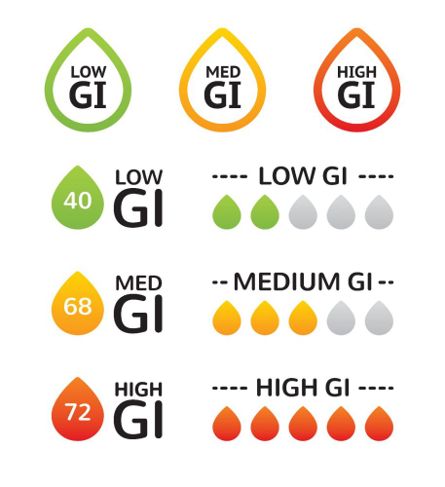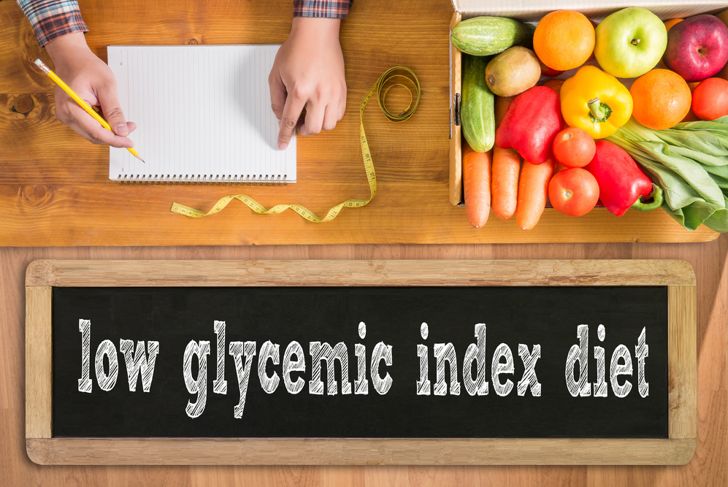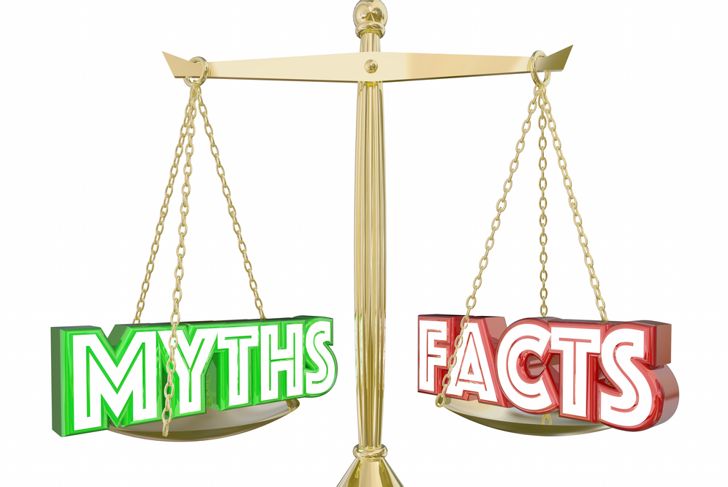The Glycemic Index is a tool that measures how different foods affect blood glucose levels in the body within a few hours of eating. It was invented in 1981 by David Jenkins of the University of Toronto. His goal was to help people with diabetes choose foods that keep their blood sugar in balance. Once introduced, diet experts and nutritionists tested foods for their properties and influence on sugar levels. Hundreds of foods were added to the Index. It didn’t take long for dieters to take advantage of the information the Glycemic Index provides.
How is the Glycemic Index Measured?
To calculate the average GI value of a food, scientists measure how blood sugar changes over time. They use at least ten volunteers in order to create an average value. To be tested successfully, the food must have 50 grams of carbs at the start of the test. Subjects undergo blood tests at regular intervals over the following two hours to measure glucose content. A particular formula gives results and provides a relative ranking of each food.
Trends in the GI Index
The Glycemic Index ranges from 1-100. Foods lower on the chart are better for people with diabetes and dieters looking to reduce their carb intake to lose weight. These foods have higher levels of protein, fat, and fiber. These three compounds slow down the body’s ability to process sugar. Studying the GI Index has lead to interesting discoveries. The potato, often considered a healthy option, is the worst thing you can eat according to the GI Index. The root vegetable can fall anywhere between 82-100. Saltine crackers, pineapple, and pretzels are also high-GI. Yogurt, pasta, and dairy are low on the GI index.
The Benefits of a Low-GI Diet
Research over the past two decades has confirmed the health benefits of eating foods low on the Glycemic Index. Preventing Type 2 Diabetes is one example; it is easier to maintain low glucose levels if you are conscious of how different foods affects blood sugar. Because many low-GI foods also have high amounts of fiber, they move more slowly through the body and help curb appetite. Carbs also absorb more slowly thanks to fiber and affect blood sugar more slowly.
How does Eating Foods in Combination Make a Difference?
The Glycemic Index only provides values for foods eaten alone. No one eats one food exclusively, so it is important to consider the effect when foods are eaten at the same time. A baked potato eaten plain is high on the GI index, but if you eat a loaded baked potato with sour cream and butter, the GI value actually of the meal decreases. THe fat in butter and sour cream is low on the GI scale.
What Other Factors Affect the GI Index of Foods?
The Glycemic Index is only an average measure of a food’s GI value. Keep in mind ripened fruit shows a higher GI value than green or unripe fruit; processed store-bought fruit juice has an even higher GI. Other processed foods share the same tendency (for example, boxed mashed potatoes versus fresh potatoes). How you cook your food also changes the GI value. Well-cooked pasta ranks higher on the Index than when it is al dente. Other foods that have a higher GI when cooked include carrots, potatoes, corn, rice, and some grains.
Diabetes and the Glycemic Index
Diabetes was the driving force behind creating the Glycemic Index, so it’s no surprise that it can help with meal planning. The GI is particularly useful for managing Type 2 Diabetes as it provides them the information they need to make smart-starch choices. It is more important for people with diabetes to watch their carbohydrates than to eat foods that sit in a particular position on the GI. But when used in collaboration, the index can help them make smart diet choices.
How to Use a Low-GI Diet for Health
If you’re interested in the Low-GI Diet as a lifestyle choice, you don’t have to carry a copy of the Glycemic Index with you to every restaurant or grocery store. Remember, the GI values often change depending on how you fix your meal and what you eat with your carbohydrates. Reduce the amount of soda and juice you drink, and replace them with water or skim milk. Eat more nuts and wholegrain bread (avoid white bread) and increase your intake of Omega 3 fatty acids. The latter can be found in lean meats and “oily” fish or seafood. Finally, go crazy on fruits and veggies – more than five servings a day.
Glycemic Load, the New Facts
One of the main problems with the Glycemic Index is its complexity. To calculate the value correctly, you have to use a sample of precisely 50 grams. But in many foods, 50 grams is more than the typical serving. Enter: the Glycemic Load (GL). Just like the GI, GL calculates how long a food affects blood sugar after eating, but it uses a formula that takes into account grams per portion. In written form, the Glycemic Load = GI x Carbohydrates (g) per portion divided by 100. A GL of under 10 is low, while a GL of more than 20 is high.
Is the Glycemic Index Outdated?
There has been some question recently as to whether the Glycemic Index has outlived its usefulness. In fact, one 2015 study by the Weizmann Institute of Science suggested blood glucose response to certain foods varies from participant to participant. How useful is the GI if glucose affects everyone differently? Since the GI also differs depending on food preparation, assigning a dedicated GI to each food seems moot. As with other scientific values, however, the GI is just one tool you can use to make wise choices. The Index does provide value by indicating to consumers how the body processes sugar in general.
Research into GI for the Future
In recent years, scientists have begun studying the Glycemic Index and how food placements in the Index can contribute to health or disease. They have made many discoveries that show how the GI could continue to be useful in the future. One 2016 study hypothesizes that eating foods high on the Glycemic Index increases the risk of lung cancer. A 2015 study purports low Glycemic Index diets can reduce symptoms of autism. Of course, this research does not validate or invalidate the GI, but if science does corroborate these studies, then the Glycemic Index will continue to be an important tool in modern science.

 Home
Home Health
Health Diet & Nutrition
Diet & Nutrition Living Well
Living Well More
More




















